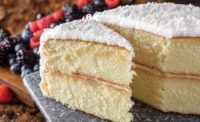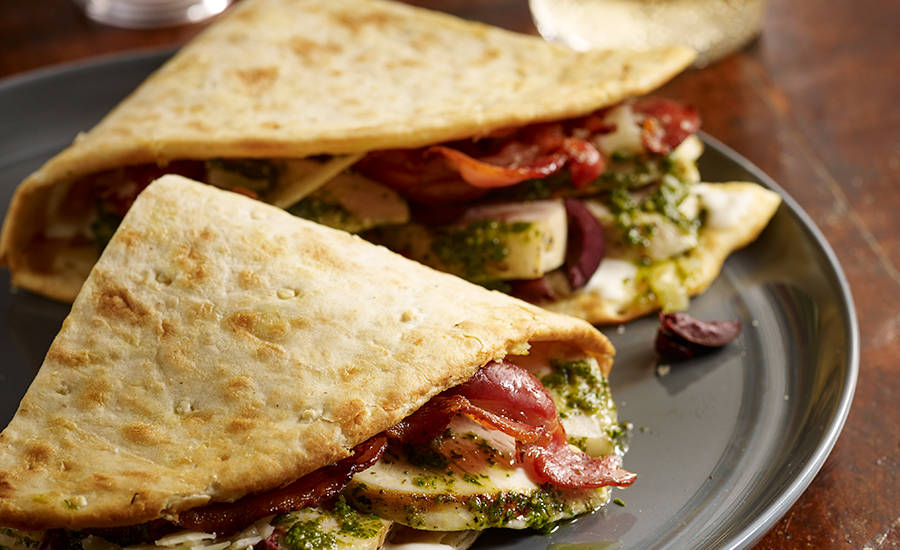Flatbreads on the Rise
Flat-out Fun: The big trend in breads is proving the world is flat.
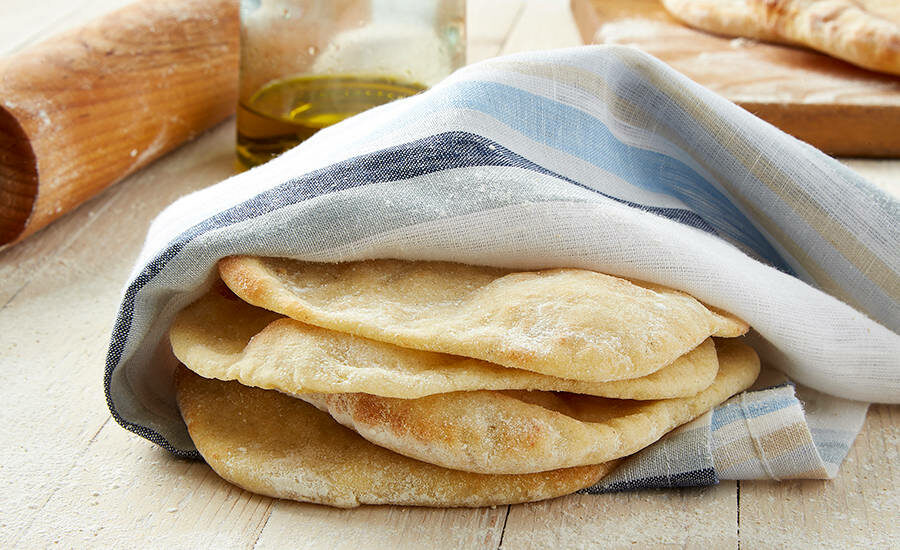
SOURCE: Kiki’s Gluten Free Foods LLC (www.kikisglutenfree.com)
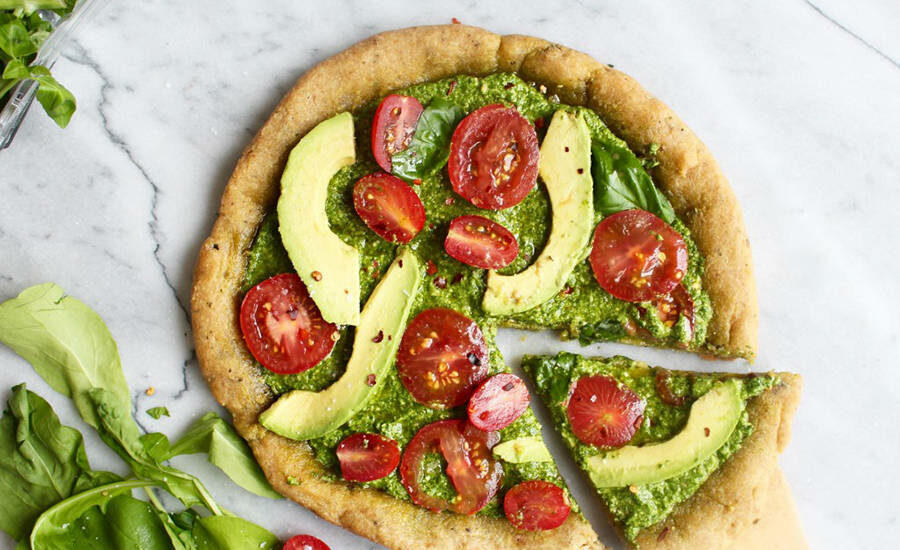
While unleavened and semi-leavened breads are expanding their application options, the classics, such as pizza, remain as popular as ever.
SOURCE: Simple Mills Inc. (www.simplemills.com)
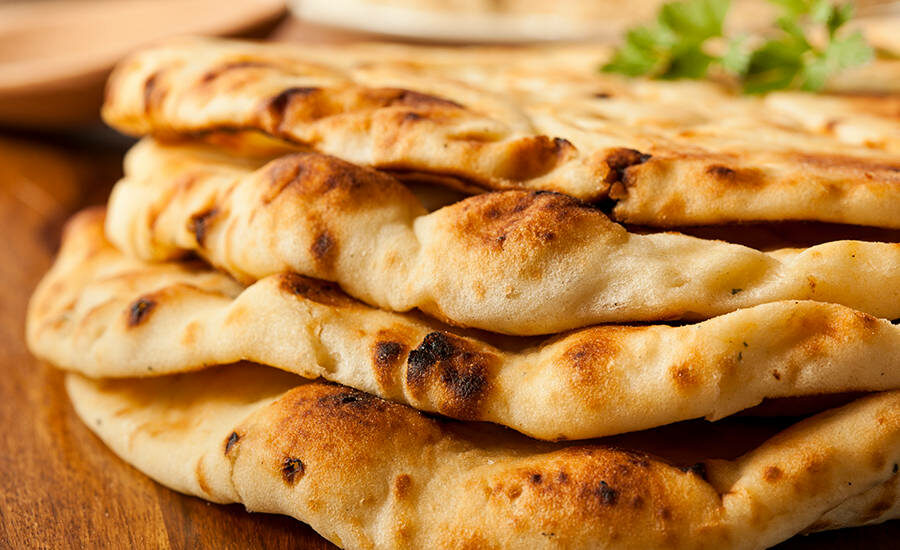
Specialty phosphate compounds can act as leavening agents to control gas release during baking, enabling flatbread manufacturers to achieve optimal shape, size, and texture.
SOURCE: Xingfa Group Co. Inc. (www.xingfausa.com)
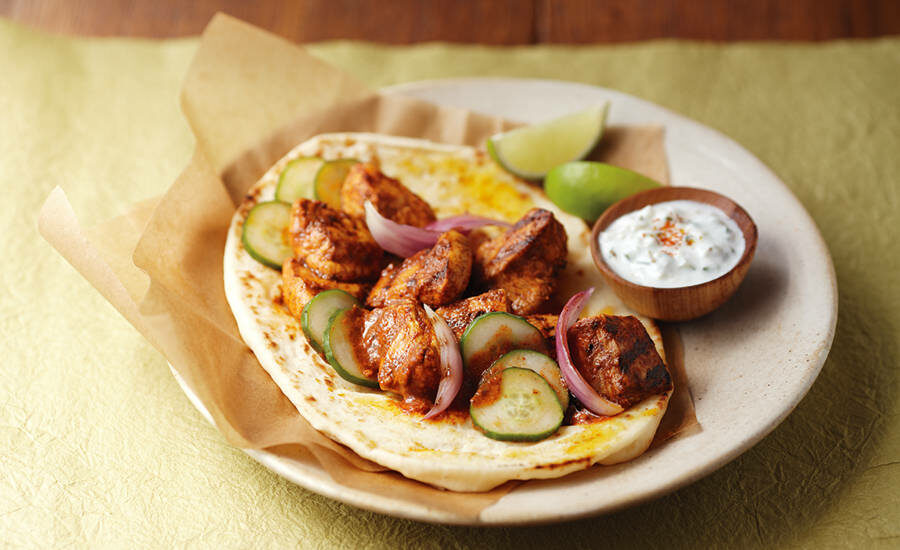
No longer shunning carbs, consumers now recognize that well-crafted breads made with good ingredients contribute to a healthful diet.
SOURCE: Ardent Mills Inc. (www.ardentmills.com)
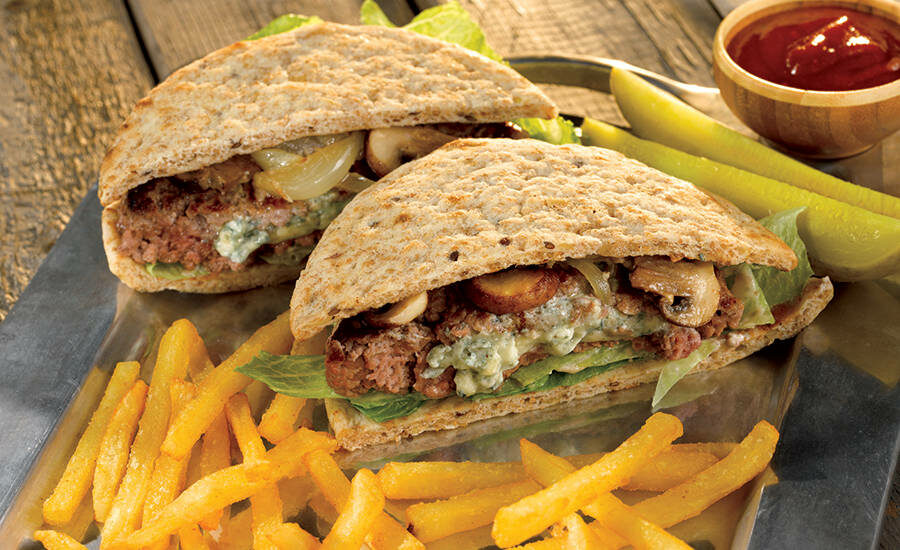
Even long-time leaders in the ethnic bakery product industry are working overtime to meet consumer demand for variety and versatility in flatbread products and uses.
SOURCE: Kontos Foods Inc. (www.kontos.com)
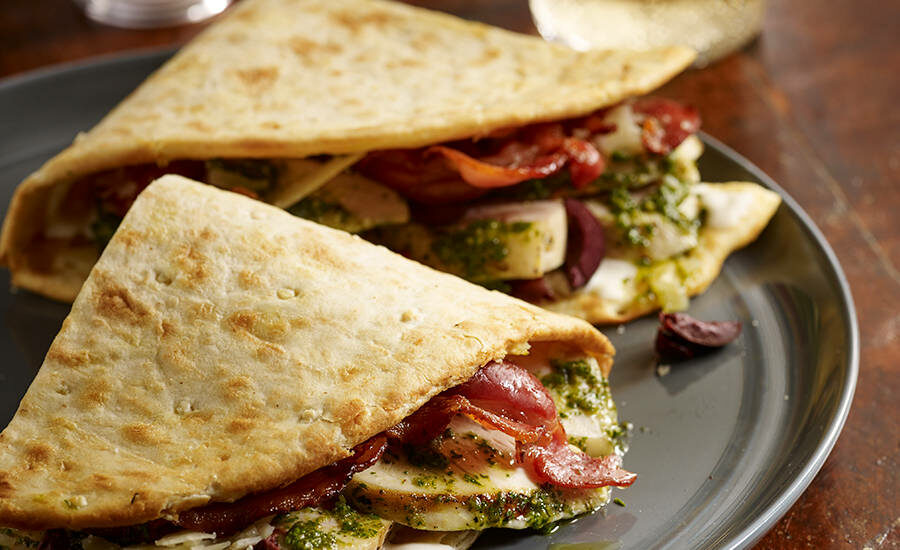
Today’s bakers are appealing to consumers with artisanal flatbreads designed to take pizzas, sandwiches, and wraps to the next level.
SOURCE: Bonici/Tyson Food Service Inc. (www.tysonfoodservice.com)
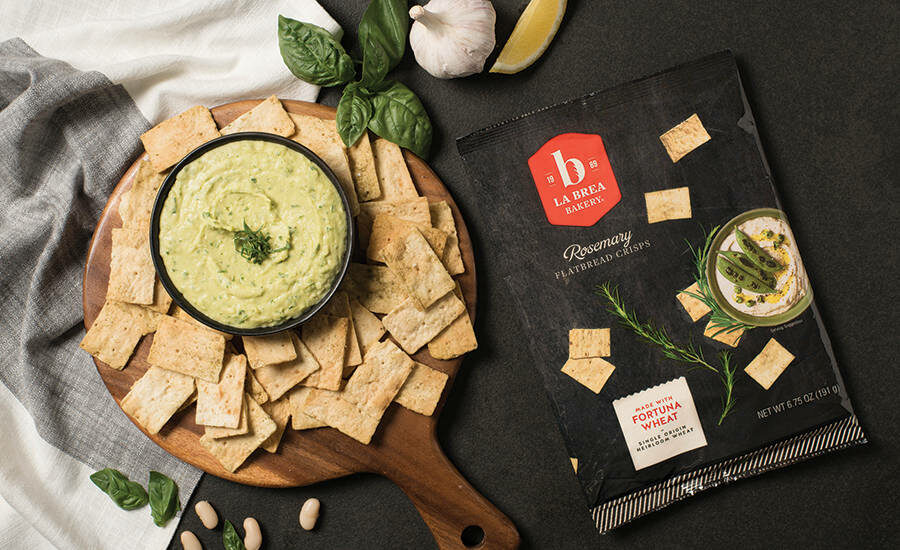
From herb-infused pita crisps, to gluten-free pizza crusts, and fiesta flat taco shells, today’s manufacturers are becoming more creative with flatbreads.
SOURCE: LaBrea Bakery Inc. (www.labreabakery.com)







The history of flatbreads began during the Neolithic period, and marched forward according to ingredient availability, socioeconomic conditions, and technological advancements. Flatbreads were the first breads, simply made from stoneground grains and water rolled into a flat dough.
Baked on heated rocks and later in clay ovens, such breads were a staple of many cultures. Each culture put its mark on the breads, developing their individual identities as Indo-Persian naan, Near- and Middle-Eastern pita, Scandinavian flatbrots, and North- and Central-American tortillas.
During the past few years, the desire to eat more cleanly and healthfully has grown in importance. Gluten-free has remained a strong trend, and consumers are demanding better taste, texture, and nutrition from the products they purchase.
Article Index:
- Variety, Simplicity
- Gluten-Free Impact
- Working Without
- New Old Grains
- Naan's the Word
- The Crispy Side
When it comes to new trends in the bread category, bakers have put a fresh face on flatbreads. Modern culinary revolutions, alongside technical progress, have brought these most basic of breads into the 21st century. And driven by such trendy demands for ancient grains and gluten-free options, their appeal is stronger than at any time since they were a primary source of sustenance.
The flatbread of ancient times might have been nothing more than a dense, flavorless slab of cooked flour and water. Today, manufacturers are appealing to consumers with artisanal approaches to breads that can provide support for pizzas and sandwiches, enclose succulent fillings in flavorful wraps, and even be baked into crispy toasted snack chips.
Due to this renaissance in appeal, manufacturers have been rushing to provide consumers with scores of varieties of gluten-free flatbread, gourmet flavored flatbreads, and a dozen different grains and grain combinations and enticing new textures. In addition, old standby formats such as tortillas and pizzas are benefiting from these “upgrades” and enjoying a categorical reinvigoration.
Variety, Simplicity
“Flatbreads offer food manufacturers, restaurants, and institutions a simple way to offer a great deal of variety,” says Cheryl Lew, culinary instructor at Laney College, Oakland, Calif., and baking consultant to industry. Explaining the upswing in the popularity of flatbreads, Lew notes how flatbreads lend themselves well to being made from and flavored with seeds, nuts, herbs and spices.
Such ingredients are experiencing strong consumer interest in their own right, based on their health aura, flavor, and “back to origins” appeal. The breads themselves attract interest by virtue of their versatility, in that they can be made using ingredients ranging from simple all-purpose wheat flour to sourdough starters and heirloom wheat varieties. Flatbreads also lend themselves well to other food trends, such as gluten-free, low-carb, and wraps.
From an execution and manufacturing perspective, flatbread preparation is fairly simple, and the products have a short baking time. This means they can be produced more quickly than other breads, allowing lines to speed up production. They often are made without yeast; the dough requires only a brief rest period, thereby eliminating the need for proofing boxes or other pieces of specialty equipment. This makes them not only cost-effective but space-effective as well.
La Brea Bakery LLC, began as a simple retail store in Los Angeles, serving only six archetypal artisan breads. It now produces 35 artisan breads and has numerous retail stores, as well as a manufacturing facility in New Jersey.
One of the struggles the company faced in previous years—most especially during the low-carb craze—was a consumer perception that “bread is bad for you.” In part for this reason, the company spent years developing artisan breads that meet the definition of “clean label.” Consumers have come back to the idea that bread products made with wholesome ingredients can be part of a nutritious, balanced diet.
La Brea manufactures its flatbreads using simple ingredients, such as sprouted whole wheat flour and clarified butter. All products are made without artificial colors or flavors, and have no preservatives.
The texture of the company’s flatbreads can be attributed to a high baking temperature, 750°F and above. Its naan is “perfect for pizzas on the grill, and open-faced sandwiches,” says Jonathan Davis, senior vice president of R&D for the company.
Davis was one of the original team members at La Brea and today plays an instrumental role in the development of new products. This includes the company’s new line of flatbread crisps. According to Davis, one of the driving forces behind today’s flatbread trend is the consumer demand for clean label, non-GMO products made from the highest quality ingredients.
Besides the clean label and high baking temperature, novel flours are another way the company has been able to differentiate its flatbread products from the competition. Currently, La Brea is the only national bakery using sprouted whole wheat flour in all of its flatbreads. For the line of pita crisps it launched in early spring, La Brea turned to a single-origin Fortuna wheat.
Fortuna wheat is from an heirloom grain, farmed in Montana. The company also uses this same heirloom wheat in its “farm to table reserve” breads. It is produced for flavor, rather than yield, which makes a remarkable difference in the finished products’ taste.
By using premium ingredients in its pita crisps, La Brea has been able to appeal to consumers seeking healthier snacks they can enjoy while “on the go.” The pita crisps are offered in three flavors: sea salt, rosemary, and smoked paprika.
Gluten-Free Impact
“Gluten free is here to stay,” reports Darrin Tristano, executive vice president of research group Technomic Inc. Research by Tyson Foods Inc. also notes that more than two-thirds of foodservice operators offer flatbread items. And, research by Datassential early last year revealed a 33% growth rate in the flatbread category through the four previous years.
With flatbreads quickly becoming a key staple, Tyson Inc.’s foodservice division expanded its Bonici flatbread line to include a gluten-free option in both the standard flatbread and the flatbread crust formats. The products can be used as a pizza crust or a sandwich bread. The company notes also that it can be the basis of a unique dessert.
The Bonici product line is not only gluten free, it can also claim allergen-free status and non-GMO project verification. It comes in several formats: a 5.5" square Golden Flakey [sic] flatbread; the 7x9" oval Rustic Flatbread; a parbaked 7x10" Gluten Free Artisan flatbread; and a parbaked, 10" Gluten Free Parbaked Pizza Crust. Crafted with an irregular shape and dark toast marks, the Bonici flatbreads have an “artisan appeal” that the company describes as a “freshly prepared back-of-house look.” Texture-wise, the flatbreads are flexible, yet “sturdy enough to hold up generous fillings and toppings.”
Kiki Michalakos founded Kiki’s Gluten-free Foods LLC not based on consumer demand but after her son was diagnosed with celiac disease. Michalakos claims not to believe in focusing on marketing trends even when developing new products. “Persons with a health condition, such as celiac [disease], are not driven by trends—it’s not a convenient disease,” she explains. “They’re seeking great flavor and are more mindful of healthy eating. If the quality is there, other consumers will follow.”
And she’s right. With more than 80% of sales going to persons not medically in need of restricting gluten in their diet, and a still-growing market base, gluten-free is no longer seen as a fad. It’s undeniably a permanent part of the market. Aside from allergies, this growth still is largely attributed to consumer perception that gluten-free is a “smarter” and “healthier” way to eat. As a result, Kiki’s has created a successful business by focusing solely on gluten-free meal solutions.
Michalakos recognized early on that there were insurmountable challenges for restaurants to cater to people who aren’t simply gluten-intolerant but have severe gluten allergies. Because flour suspends in the air, the risk of cross-contamination is high.
It is extremely difficult for a restaurant to produce gluten-free items in its kitchens. This meant that serving this relatively small but still seven-figure consumer demographic would have to be accomplished through retail products. Another option is for processors to tailor prepared foods for the foodservice channel.
Kiki’s took advantage of this opportunity in the foodservice channel, and now provides its products to a number of restaurants offering certified gluten-free items on their menus. For example, the company has been selling its certified gluten-free pizza crusts and pita breads to hundreds of pizzerias and ethnic eateries nationwide. Today, about half of the company’s sales come from its sales to the foodservice industry.
Working Without
Producing tasty gluten-free products still presents numerous hurdles. Kiki’s faced several obstacles when developing its gluten-free pizza crusts. There are many new, more nutritious flours on the market, such as almond and coconut flour (see “Flour Power,” PF October).
To develop a dough with the right texture, taste, and color, manufacturers must use a blend of flours and rely heavily on R&D to hit precise balances in the ingredient system. Using the wrong blend of flours can significantly affect both taste and texture.
It is also bears noting that many of these flours are not totally allergen free. For example, people who have tree nut allergies cannot eat products made with almond flour. In addition, gluten-free flours don’t have the same cell structure as wheat flour, creating structural challenges.
Tapping into a market like gluten-free that has such a narrowly specific need isn’t simple. In the past, finding certified milling facilities was difficult. Due to growing demand, however, finding the necessary raw ingredients to work with is becoming easier, with many small millers and even larger milling operations having established clean facilities.
Even after flavor and texture are nailed down at the bench, scaling up can present problems. Production might come to a halt because the dough is too sticky, or it has jammed a machine. Costs can soar due to the need for specialized ingredients or preparation methods. Effective troubleshooting can pose an issue since the flour blend used by the company typically is proprietary information.
New Old Grains
Late last year, Mintel’s 2016 global food and drink market report predicted that “ancient grains and better-for-you yet indulgent products will be at the forefront of new year trends.” Supporting that, the Smart Flour Foods LLC philosophy of flatbreads begins with a few catchy taglines: “Ancient grains for a modern world” and “You won’t believe your mouth.” While the company isn’t solely focused on producing flatbreads made with ancient grains—it also offers gluten-free products—the major point of differentiation is the blend of ancient grains featured prominently on the company’s ingredient list.
“Chefs enjoy using our flatbreads for appetizers, as well as a base for crispy, artisanal pizzas,” says Josh Shurtleff, vice president of operations. “Using ancient grain-based flours gives flatbreads a crispy crust with a nice chew in the middle, making them useful for multiple applications.”
The grains used to create all the company’s products comprise a variety that also happens to be gluten-free. Chief among them are sorghum, amaranth, and teff. In addition to providing a hearty flavor with a tender texture, these ancient grains also have a natural slight sweetness that can obviate the need for added sweeteners.
Another benefit of formulations made with gluten-free ancient grains is that ancient grains offer additional nutritional benefits. These ingredients produce flatbreads high in protein, calcium, and iron, which health-conscious consumers often seek out.
From a manufacturing perspective, the use of ancient grains can also help to alleviate some of the challenges manufacturers face in producing gluten-free flatbreads. To produce a product that has the strength and elasticity of a traditional wheat-based product, as well as a mouthfeel that people have come to expect, using the right ingredients is key.
Naan’s the Word
Kontos Foods Inc. has been making flatbreads for more than 25 years. Like the phyllo dough the company had successfully made for decades before, its flatbreads have a strong European/Middle Eastern background.
Kontos’s founders were confident flatbreads would prove popular in the US market, and their assumption proved correct. The company currently manufactures an unparalleled 50 varieties of flatbreads. Serving both the retail and foodservice channels, Kontos produces everything from authentic Italian panini (complete with grill marks) to Indian masala naan.
One of Kontos’s primary points of differentiation is its hands-on approach. Despite the large volume of flatbread that the company manufactures, each piece of dough is hand-stretched. The company also uses yeast in its formulation, and allows the flatbreads to proof. The combination of hand-pulling and proofing creates air pockets for a light and fluffy dough that retains more moisture.
This combination of Old World techniques results in breads with a longer shelflife (up to four months unfrozen, or one year frozen), while still maintaining freshness. In addition, the fluffy texture and high moisture retention help create a dough that tastes as if it’s fresh-baked once reheated. That “freshly baked” style appeals to both consumers and food manufacturers.
Providing such a large variety can also be challenging. There’s greater risk of cross-contamination, especially when producing flatbreads with bolder flavors, such as onion. As a result, Kontos’s entire production line goes through a thorough cleaning process each time a new flavor of flatbread moves into production. With 50 varieties, this means a lot of time is dedicated to clean-up, making it essential for production to run as efficiently as possible.
Another obstacle companies face when producing a high number of SKUs is how to market so many products. Highlighting the role marketing can play is one of Kontos’s current “better for you” flatbreads with lower carbohydrate and extra protein. Previously sold under the name “Smart Carb,” the company rebranded the product “Greek Lifestyle Bread” to emphasize the Greek background behind it.
After this improved articulation of the properties, the flatbread became Kontos’s top-selling SKU in retail. The company is now focusing its marketing on several new flatbread products for the travel industry, including a “cocktail pita;” a small pita disk that can be used by airlines in a fashion similar to a cracker.
The Crispy Side
Ortega Inc. started out as a purveyor of chili peppers. But, the full-service Mexican brand’s founders felt it was only natural for them to move into the tortilla category. Through the years, tortillas have become an increasingly popular flatbread with strong Mexican roots. This is due in large part to the product’s versatility.
Tortillas have a long history of being used to make everything from chips and tacos to wraps and breakfast sandwiches. From a product development perspective, tortilla products still provide opportunities. They lend are versatile on several fronts, including health, gluten-free options, ethnic cuisine appeal, and also the trend toward fusion of different cuisines.
In the health category, Ortega has long offered whole wheat versions of its flour tortillas. And, of course, tortillas made solely from corn are naturally gluten-free. But Ortega and other tortilla makers also are increasingly using ancient and whole grains, as well as nutritious seeds, to appeal to health-conscious consumers. For example, Ortega currently produces a proprietary blend of white corn and chia seed taco shells, ancient grain taco shells, and purple corn tortillas and shells.
On the other side of crispy flatbreads, old-fashioned cracker-like crisped rye items are getting an update on several fronts. Natural Nectar Foods Inc.’s crisped rye flatbreads are not only organic but biodynamic certified. This stricter form of organic farming calls for greater integration of soil, growth, methodology of production, and integration.
Other value-added approaches to the category include items such as Wewalka Trading Corp.’s refrigerated flatbread dough. The product is a premade dough rolled on parchment paper and ready to bake, allowing for more individualization in appearance and performance. The company’s dough for thin and crispy flatbread is one of five refrigerated dough items the European-based company has launched in its two years in the US market.
Wewalka’s pre-rolled doughs do not include bleached flour, high-fructose corn syrup, hydrogenated oils, or artificial flavors or colors. The parchment paper makes dough handling, baking, and post-production cleaning easy, without the need for baking sprays.
Tortilla and other flatbread makers also have expanded added flavors, making products with ingredients such as rosemary, oregano, or other fresh herbs, black pepper, chili peppers, sundried tomatoes, smoked paprika, and anything else that’s flavorful and can be effectively rolled flat and baked.
Originally appeared in the November, 2017 issue of Prepared Foods as Flat-out Fun: Flatbreads on the Rise.
Looking for a reprint of this article?
From high-res PDFs to custom plaques, order your copy today!





